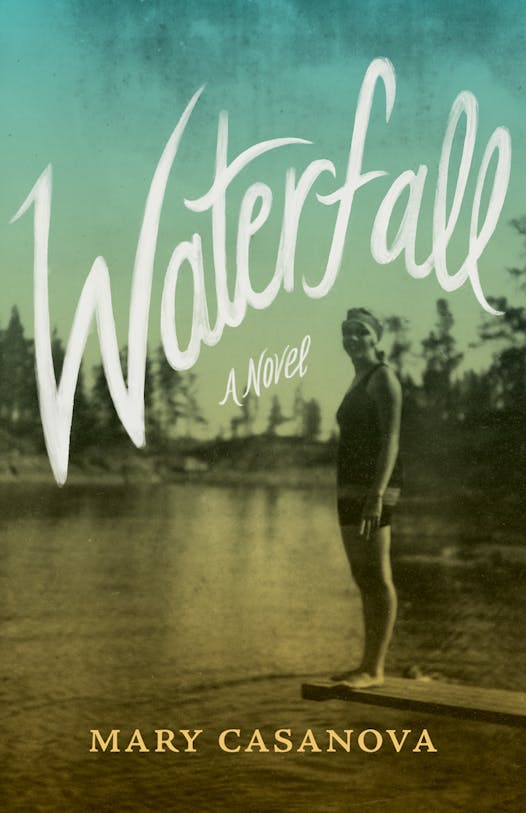In Mary Casanova's latest novel, "Waterfall," 21-year-old Trinity Baird is summering on the family island in northern Minnesota after a two-year stint at an asylum in St. Peter, Minn. It is 1922 — think women's suffrage, costumed dinner parties, wooden speedboats. Think "The Great Gatsby" comes to the Boundary Waters.
Four years after World War I, seven years before the Great Depression, the novel is set at a time of great wealth and industry, classism and bigotry. The eugenics movement is embraced by an elite group of Americans as well as by a certain anti-Semitic demagogue in Germany; the 19th Amendment has been ratified, yet women are still controlled financially by men. And nonconforming females are often sent to asylums for what medical professionals term "hysteria."
Trinity returns to the family island hoping to rest, recover and prove to herself and her parents that she is healthy and ready to return to classes at the Sorbonne in Paris that autumn.
It is a June to August journey filled with yachting and parties against a backdrop of rugged woods and waterways.
Casanova portrays the characters of Baird Island vividly: There are glittering socialites, "an heiress of a major shipping company," a lumber tycoon in a pinstriped suit, a Hollywood actress, a rugged environmentalist, a father who "denied hard truths" (another way to say racist), a young architect, a defiant divorcée and her maid, and Sinclair Lewis as laconic Greek Chorus, telling Trinity, "You should be causing your parents alarm."
Over the course of the summer, these characters swim, yacht, drink and twirl parasols while Trinity befriends the young architect, paints in her studio and comes to terms with who she is. Fast-paced scenes depict Trinity's growing independence from a society that would hold her down: She leaps into frigid water to save her inebriated sister, rescues drunken neighbors from a logjam, drowns an injured muskrat.
In one of the novel's pivotal scenes, she spends a stormy night alone with her injured dog on a lesser island, screaming cathartically into the wind like a female Lear on the northern heath.
There's plenty to feel uneasy about in this novel. It's hard to feel sympathy for a rich white girl blustering on about breaking free from bigoted parents as she tools around petulantly in her parents' wooden speedboat. But it is perhaps unfair to judge the coming of age of a young woman in 1920 through the lens of 2021. The 1920s were not an easy time for women. Trinity is a sympathetic narrator doing what she can with what she has.
All in all, the young artist proves her mettle. In the end, revelations come fast and furious. The disclosures are at times clearly voiced, at times deftly intimated, which makes "Waterfall" a refreshing and satisfying read.
Christine Brunkhorst is a Twin Cities writer and reviewer. She teaches English to Adult English Language Learners at Learning in Style School in Minneapolis.
Waterfall
By: Mary Casanova.
Publisher: University of Minnesota Press, 255 pages, $22.95.
Event: 7 p.m. May 13, virtual event with Beagle and Wolf Books & Bindery; register at beagleandwolf.com/events.html
Review: Ten Thousand Things' 'Spitfire Grill' crackles in minimalist staging
A grieving family fights for suicide-prevention barriers at a Minneapolis hotspot

The Big Gigs: 10 best concerts to see in the Twin Cities this week



